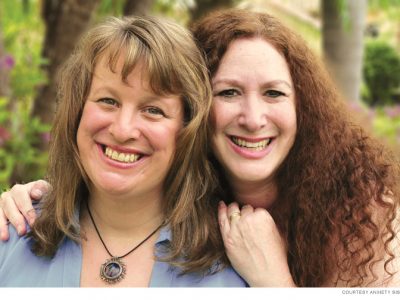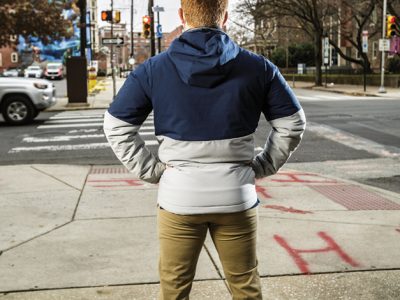
For thousands of years practitioners of Kundalini yoga have used it to bring the mind and body into balance. Penn scientists are now asking whether a form of meditation grounded in this Hindu tradition, known as Kirtan Kriya, can even help patients with dementia.
“Can you treat the brain like a muscle?” asks Dr. Andrew Newberg M’93, an associate professor of radiology and psychiatry who is the study’s principal investigator. “If you exercise your muscles, they get bigger and stronger and work better. If you exercise your brain, does the brain work better?”
This is the first study to be conducted by the new Center for Spirituality and the Mind, which brings together research in a wide variety of disciplines across the University to explore the links between neuroscience, cognition, behavior, and spiritual phenomena.
“Penn itself is very unique in this area. It’s probably one of the few major universities that have had so many people” involved in these questions, says Newberg, the center’s director. “Since spirituality is such an important part of people’s lives, we do need to understand it better.”
According to Newberg, the Kirtan Kriya study is “the first research project to ever really look at the effect of meditation in patients with mild dementia, ranging from mild cognitive impairment to early Alzheimer’s Disease, and to couple that with [neuro]imaging to see not only whether there are clinical improvements but changes in the brain’s function.” (Previous studies involving long-term meditators without cognitive impairment have found changes in the thalamus, a key relay center for the brain, and cortical thickening.)
If the 12-week program of chants and finger movements fails to improve cognition for those with a neurological illness, there are other possibilities in the constellation of spiritual practices to investigate. “If Kirtan Kriya doesn’t work, maybe Transcendental Meditation does.”
Newberg has used imaging technology to examine what happens in the brains of people undergoing a wide range of religious experiences [“Why God Won’t Go Away,” May/June 2001]. He has peered into the frontal lobes of meditating nuns, Buddhists, and atheists, and Pentecostals speaking in tongues, reporting on the findings in his new book, Why We Believe What We Believe: Uncovering Our Biological Need for Meaning, Spirituality, and Truth (Free Press, co-written with Mark Robert Waldman).
The center’s research interests will be similarly catholic, ranging from measuring the effects of an Ignatian retreat on the brain’s serotonin levels to testing spirituality curricula for medical students to analyzing the role that ritual could play in prompting terrorist acts.
“We want to understand better the physiological underpinning of spiritual practices across a broad range of practices and traditions,” Newberg says. “How does this relate to the care of patients in the clinical setting? How does spirituality affect mental health, and how does mental health affect spirituality? Are there certain aspects of meditation and prayer that can be brought into the clinical realm? And the bigger question—what are the implications of all this research from a philosophical, theological, or cultural perspective? There is so much we can do, and in so many interesting areas.”
Though discussions about creating such a center go back a decade or so, one of the more recent catalysts for it has been a three-year grant from the John Templeton Foundation sponsoring lectures throughout the year on the topic of “Mind, Religion, and Ethics in Dialogue.”
A large interdisciplinary group of faculty members convenes throughout the year to discuss issues raised by the lectures, and many of its members are becoming fellows of the new center. Some, like Newberg, know their way around an MRI machine; others bring the perspectives of law, social work, or history to bear on these topics.
One fellow is Dr. Ann Matter, professor and chair of religious studies, who studies Christian mysticism from the Middle Ages to the present. “I study mysticism as an historical phenomenon, and I’m interested in what that means in a physiological way,” says Matter. “That’s exactly what Andy’s center is interested in: what ecstatic or religious experiences actually do to the mind.
“One of the big debates among historians over the last hundred years or so is about how much credence do we give to these reports of experience,” she notes. “Were they people who had eaten some mushroom? Or was [Spanish mystic] Teresa d’Avila an epileptic? Were some of her out-of-body experiences petit-mal seizures?” Ultimately, most historians put such questions aside as peripheral to their work.
“I can’t measure Teresa’s brain,” Matter says. “I don’t know which lobe is lighting up. But it’s interesting to think comparatively with people who are being studied by what Andy does—not to diminish it, but to show that there’s a physiological component with these experiences.” On the other hand, she adds, “it doesn’t affect the way I’m going to interpret the people I study.”
Another center fellow is Dr. Lisa Lewis, assistant professor of nursing, who’s investigating the correlation between levels of spirituality in African Americans and their adherence to blood-pressure medication regimes.
“There’s so much we need to learn in terms of controlling hypertension,” Lewis says. “African Americans suffer disproportionately more than any other population, and one of the ways they can get it under control is through better medication adherence.” Existing research shows that spirituality does play a role in many African Americans’ decision-making processes regarding their own health.
Newberg hopes the center’s presence will help draw in more research dollars for all the questions about how spirituality interacts with the mind. “It’s very multidisciplinary, which is part of what makes it difficult to get funding in this area,” he says. “But the rewards can be that much more.” —S.F.




